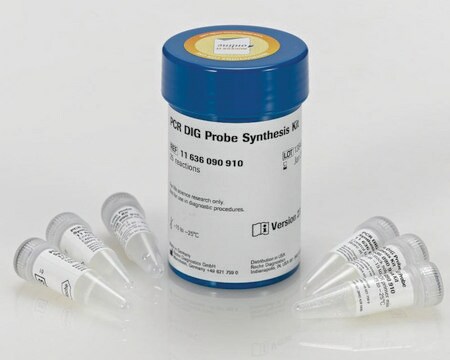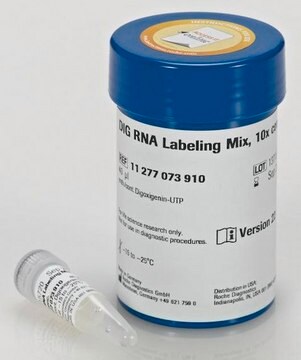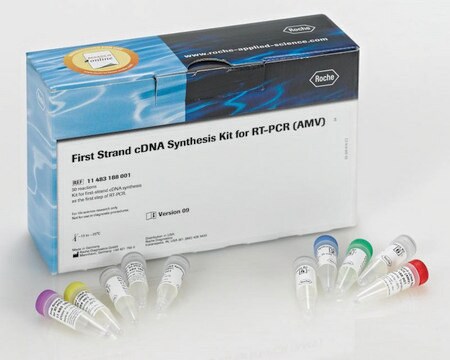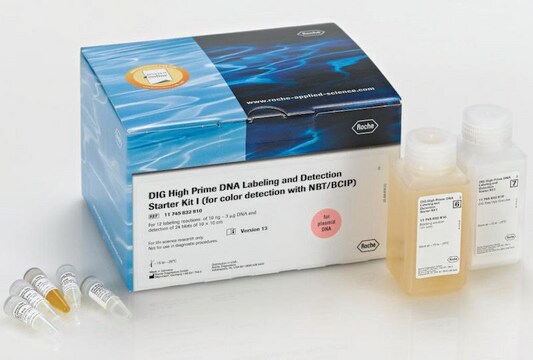11585550910
Roche
PCR DIG Labeling Mix
solution, suitable for PCR
Sinônimo(s):
nucleic acid labeling
About This Item
Produtos recomendados
Formulário
solution
Nível de qualidade
uso
sufficient for 2 x 25 assays (100 ul final reaction volume)
embalagem
pkg of 500 μL (2 x 250 μl)
fabricante/nome comercial
Roche
características do produto alternativo mais ecológico
Designing Safer Chemicals
Learn more about the Principles of Green Chemistry.
sustainability
Greener Alternative Product
técnica(s)
PCR: suitable
cor
colorless
solubilidade
water: miscible
categoria alternativa mais ecológica
, Aligned
temperatura de armazenamento
−20°C
Descrição geral
When using higher concentrations of DIG-deoxyuridinetriphosphate (dUTP) what is supplied with the PCR DIG Labeling Mix, the yield of the PCR product may be reduced, but however, the label intensity and the molecular weight of the PCR product is increased.
Aplicação
PCR DIG Labeling Mix has been used in the preparation of digoxigenin-labeled riboprobes during the in vitro transcription step.
Qualidade
forma física
Outras notas
geralmente comprado junto com este produto
Código de classe de armazenamento
12 - Non Combustible Liquids
Classe de risco de água (WGK)
nwg
Ponto de fulgor (°F)
does not flash
Ponto de fulgor (°C)
does not flash
Escolha uma das versões mais recentes:
Já possui este produto?
Encontre a documentação dos produtos que você adquiriu recentemente na biblioteca de documentos.
Os clientes também visualizaram
Artigos
Digoxigenin (DIG) labeling methods and kits for DNA and RNA DIG probes, random primed DNA labeling, nick translation labeling, 5’ and 3’ oligonucleotide end-labeling.
Nossa equipe de cientistas tem experiência em todas as áreas de pesquisa, incluindo Life Sciences, ciência de materiais, síntese química, cromatografia, química analítica e muitas outras.
Entre em contato com a assistência técnica





